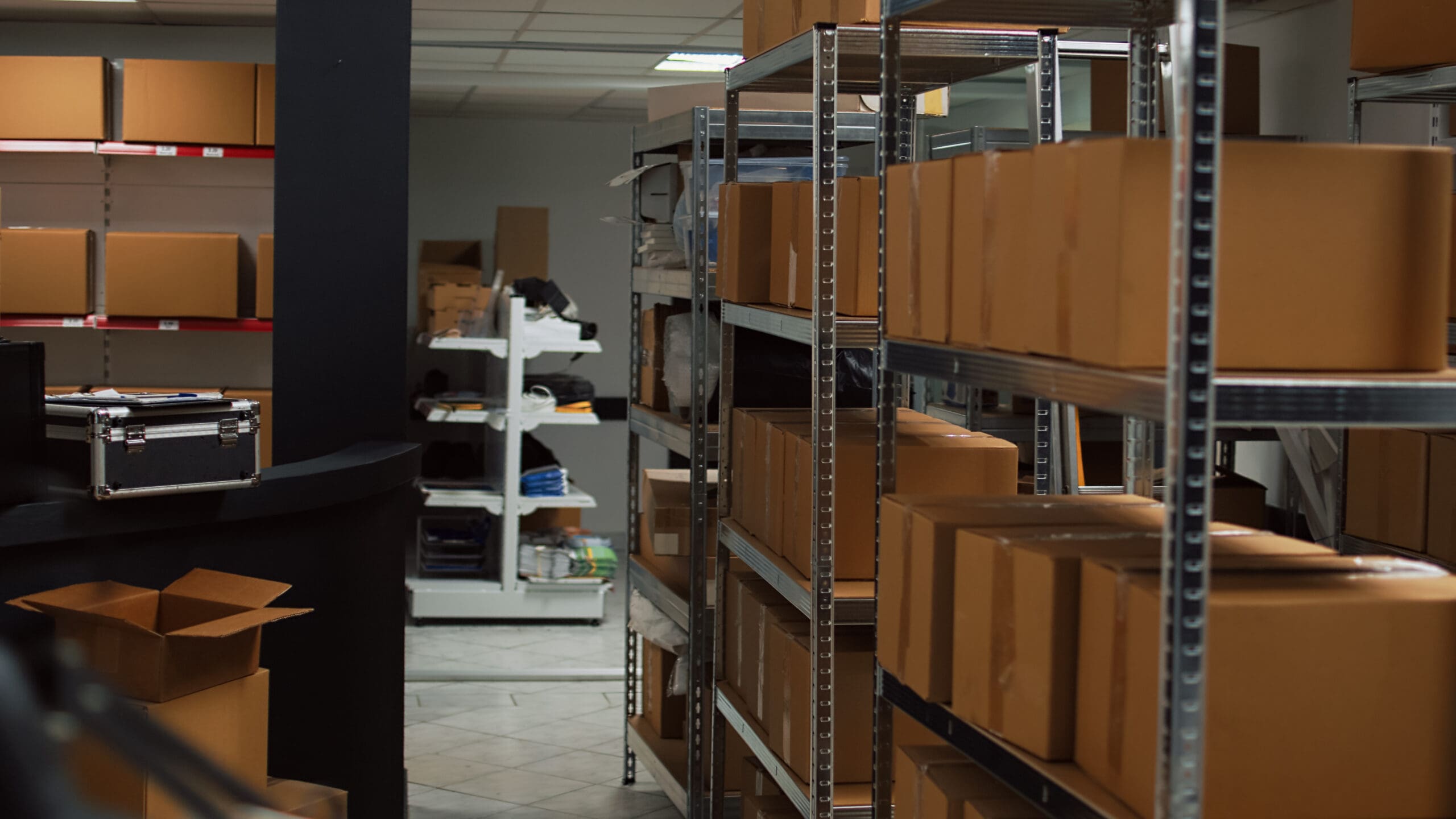What is inventory management?
Inventory management is a systematic approach to monitoring the flow of your inventory and determining how much stock to hold at any given time. It is an essential part of supply chain management as it streamlines order fulfillment by keeping track of stock from the moment it arrives until it has been shipped to the end consumer. Without proper inventory management, it will be difficult for you to control other aspects of your business from order fulfillment to cash flow oversight.
Why is inventory management important?
The simple answer is that without proper inventory management, it will be difficult to efficiently manage your budget. For instance, holding too much inventory can affect your operational, holding, and transportation costs. On the other hand, holding too little inventory can impact your ability to maintain or improve customer satisfaction. This could then lead to loss of profit and even business failure.
Keep in mind that there is no one-size-fits-all strategy when it comes to inventory management. Effective inventory management should depend on your business model, sourcing method, and fulfillment system.
What is the role of inventory management?
The main role of inventory management is to effectively keep track of your products from procurement of raw materials to finished goods. It should also notify you when you are buying too much stock or when you are not buying enough. Having an inventory management system in place ensures that your business has the right amount of stock to be able to fulfill customer demand. As a result, you can save on storage costs, improve your cash flow, and guarantee that your business is operating profitably.
What are the different types of inventory?
There are three main types of inventory: raw materials, work-in-progress, and finished goods.
Raw materials
All the materials needed to develop your product fall under the raw material category. Generally, raw materials form part of your inventory until it has been turned into finished product.
Work-In-Progress (WIP)
As the name suggests, WIP refers to partially finished items that are still in production. The raw material needed to produce a certain product, the labor involved, and the overhead costs associated with making the product are all classified as WIP inventory.
Finished goods
Finished goods are products that have gone through the entire production phase and are ready to be consumed by your customers. In simpler terms, finished goods are products that are ready to be sold.
Other inventory types include maintenance, repair and operations (MRO) goods, packing and packaging materials, excess inventory, and safety stock.
Best Inventory Management Strategies
Adopting the right inventory management strategy, especially for seasonal businesses, is a must. Not only does it enable you to react quickly to market changes but it can also prepare you for your busiest and slowest seasons. Here’s a closer look at some of the best inventory management strategies that you can use to support your seasonal business:
- Inventory Forecasting – According to Quickbooks, inventory forecasting is a process that determines a business’ inventory levels in future time periods based on sales projections. Inventory forecasting is a useful tool that optimizes stock levels to better manage cash flow. This method allows businesses to make informed decisions about the amount of inventory they need to satisfy future demand.
- Just-In-Time (JIT) Method – The JIT method is a type of inventory management strategy that focuses on improving the efficiency of a business’ inventory while also reducing waste associated with production. When using the JIT method, materials for production are ordered only after an order has been received – ensuring that wastage is always at a minimum. However, one big downside of the JIT method is that it can leave businesses vulnerable whenever they experience a spike in demand.
- ABC Analysis – ABC analysis is an inventory management technique that ranks items in a business’ inventory based on how valuable they are. A items represent a business’ most expensive products, B items represent products of lesser value, and C items are products that contribute least to a business’ overall profits. This type of categorization strategy helps businesses identify which products to prioritize based on their individual value.
- Economic Order Quantity – Economic Order Quantity, or EOQ, refers to an inventory management system that identifies the ideal order quantity that a business should maintain to minimize ordering and holding costs. Employing the EOQ method also improves cash flow management as it prevents businesses from tying up too much cash in inventory.
- First-In-First-Out (FIFO) – If your business deals with perishable goods, then the FIFO method might be the perfect inventory management strategy for you. FIFO stands for “First-In, First-Out.” This type of inventory management technique applies a control method in which the first items to arrive should be the first ones to leave. The FIFO method aims to move products before they can’t be sold, reducing wastage and preventing inventory from going to waste.
- Consignment Inventory – Consignment inventory is a business arrangement where a vendor or a wholesaler provides businesses with goods without the need to pay upfront. The consignor (vendor/wholesaler) maintains ownership of the products and the consignee (usually a retailer) is only required to pay for the goods until after they are sold. Consignment inventory is typically employed by retailers that want to test the feasibility of new products without putting their cash flow at risk. Consignment inventory can sometimes be confused with vendor managed inventory but they are two different concepts.
What is vendor managed inventory?
Also known as VMI, vendor managed inventory refers to a strategy in which a supplier of goods assumes responsibility for the management, supervision, and optimization of a client’s inventory. A typical VMI arrangement involves vendors handling every aspect of a business’s inventory to ensure that they have enough stock to meet consumer demand. VMI is a popular strategy that companies use to better manage their supply chain.
What is the best way to manage inventory?
Is there really a single best way to manage a company’s inventory? One important thing to keep in mind is that maintaining optimal inventory levels differs from one business to another. The good news is that there are several ways to help your business manage inventory effectively. Check out some of them below:
- Conduct regular audits – Maintaining inventory accuracy should be the priority when it comes to inventory management. Conducting regular audits helps businesses identify gaps in inventory and is an excellent way to avoid overstocking or stockouts. In addition, audits also help businesses cross-check financial records to make sure that they are holding the right quantity of goods at all times.
- Analyze inventory reports – While it seems overwhelming, analyzing inventory reports are an integral part of running a business. It’s no secret that many businesses struggle with finding the right amount of inventory to hold in their facilities. This is why it is essential to keep track of your inventory key performance indicators to manage your inventory as accurately as possible. From analyzing inventory turnover rates to identifying optimal reordering points, inventory reports will enable you to enhance customer satisfaction and ultimately increase your sales.
- Invest in inventory management technology – Innovations in technology have enabled businesses to take advantage of solid inventory management systems that can help them manage their inventory and keep track of their assets in real time. Inventory management systems also help you become more organized and automate important processes like reporting and identifying the ideal reorder point.
Pro tip: When choosing the best inventory management system, check whether the system integrates seamlessly with your existing software.
- Ensure that you have enough financing – Owning a product-based business means inventory is your lifeline. Without proper inventory management, it would be difficult to meet the demands of your customers. If you are unable to fulfill consumer demand, how will you make money? If you’re having cash flow issues due to ineffective inventory management, then it might be time to check out inventory financing.
What is inventory financing?
Inventory financing enables businesses to leverage purchased inventory as collateral. Usually, inventory financing is used by small to medium-sized businesses that have exhausted other efforts to secure financing. It’s a great financing alternative for businesses that are considering other avenues to obtain additional financing. One such alternative is Kickfurther.
How can Kickfurther help your business?
Kickfurther is an online inventory funding platform that applies a unique twist to the crowdfunding phenomenon by allowing the general public to fund companies that they want to support. Individuals looking to earn money can choose which company to fund and how much money they want to fund. The business will then offer a specific rate of return and a specific time frame to the buyers. The end goal is for businesses to outline their expected sales periods for customized payment terms. After the end of each sales period, businesses are then required to submit sales reports and provide the payment for every individual for each inventory sold.
Key Takeaway
Inventory management is a crucial process that affects almost every aspect of your business. It is important to keep in mind that inventory management is a necessary undertaking that ensures business success and profitability. When choosing an inventory management strategy, make sure to pick a method that works best for your business depending on your business model, your business goals, and your budget.

![What is Inventory Management? [Everything You Need to Know] banner image](https://www.kickfurther.com/wp-content/uploads/2021/09/iStock-1210182358-scaled.jpg)







